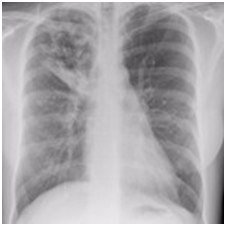Written by Lin Lee, Senior Editor, BMC Medicine
 In China, tuberculosis (TB) is a major public health problem; it has the second largest burden in the world, and TB is the number one cause of deaths due to a single infectious agent. Here, 1.4 million people per year develop the active form of the disease, and just 20 years ago, it was attributable to the deaths of 360, 000 individuals per year. However, it is known that when intervention strategies are in place, they are effective. For instance, China was able to halve the deaths attributed to TB following a large scale program initiated in 1992.
In China, tuberculosis (TB) is a major public health problem; it has the second largest burden in the world, and TB is the number one cause of deaths due to a single infectious agent. Here, 1.4 million people per year develop the active form of the disease, and just 20 years ago, it was attributable to the deaths of 360, 000 individuals per year. However, it is known that when intervention strategies are in place, they are effective. For instance, China was able to halve the deaths attributed to TB following a large scale program initiated in 1992.
Early diagnosis followed by prompt treatment are the core objectives of an effective national TB control program. However, delays in diagnosis and treatment are common; only half of Chinese patients with TB symptoms seek healthcare in a timely fashion and less than two thirds of these individuals then comply with prescribed treatment. These delays are a major barrier to effective management, so elucidating the reasons behind these are vital in developing interventions to counter the high TB burden.
with TB symptoms seek healthcare in a timely fashion and less than two thirds of these individuals then comply with prescribed treatment. These delays are a major barrier to effective management, so elucidating the reasons behind these are vital in developing interventions to counter the high TB burden.
To that end, Prof Jia Cao and colleagues performed a systematic review of the literature that looked at factors associated with TB patient delay (a delay in patients presenting to a healthcare facility) and diagnostic delay (a delay in diagnosis of TB after a patients first visit to a healthcare facility). They found that the delays were mediated by both individual factors (such as using Traditional Chinese Medicine rather than seeking care at a formal TB health facility) and health system factors (for instance, lack of qualified health workers). This suggests that any interventions to reduce the burden of TB should be tailored to focus on these issues.
Individuals living with HIV are at 20-37 times greater risk of developing TB compared with those not infected with HIV. Given that TB is the leading cause of  death for people with HIV, rapid diagnosis of HIV-associated TB has the potential to save many lives. TB is a disease associated with poverty; it disproportionately affects the most economically disadvantaged individuals of society. Therefore, a rapid diagnosis method that can be used in resource-limited settings is an ideal strategy. In a video Q&A, we talk to Dr Stephen Lawn about the point-of-care urine lipoarabinomannan (LAM) test for HIV-associated TB, which has the potential to save lives by improving rapid diagnosis and treatment.
death for people with HIV, rapid diagnosis of HIV-associated TB has the potential to save many lives. TB is a disease associated with poverty; it disproportionately affects the most economically disadvantaged individuals of society. Therefore, a rapid diagnosis method that can be used in resource-limited settings is an ideal strategy. In a video Q&A, we talk to Dr Stephen Lawn about the point-of-care urine lipoarabinomannan (LAM) test for HIV-associated TB, which has the potential to save lives by improving rapid diagnosis and treatment.
As individuals living with HIV are at higher risk of developing other serious diseases, care of HIV in itself is of high importance. Recently, BMC Medicine attended the 8th International Conference on HIV Treatment and Prevention Adherence, in which delegates discussed key issues in HIV care, namely therapy adherence and retention. Around 75% of HIV positive individuals are not on viral suppressive therapy, being lost between diagnosis and subsequent linkage to care in the HIV treatment cascade. This is an important issue; those not retained in care and who don’t adhere to care are at risk from virological failure. This issue results from failings across the cascade, including those within health care systems and patients’ behaviours.
Of particular interest were the applications of mHealth – i.e. the use of cell phone technologies to promote patient adherence. This is a particularly attractive strategy in resource limited settings, due to a high proportion of cell phone users.
BMC Medicine is currently considering articles on global health research and HIV for our two new article collections; Medicine for Global Health and HIV: thirty years on.These article collections are open for submissions, and if you would like your research to be considered for publication in BMC Medicine as part of either of these collections, please send a pre-submission enquiry to bmcmedicineeditorial@biomedcentral.com
Comments